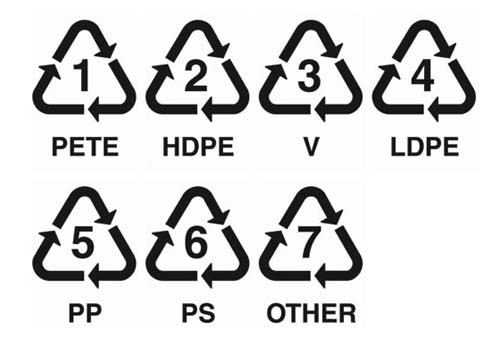Revvy said:
If they're pet use them....but most of them are polycarbonate NOT PET or PETE.
Polycarbonate uses BPA (bisphenol-A) in it's production. BPA may mimic the natural female sex hormone estradiol. In animal research it has been linked to female reproductive disorders, breast and prostate cancer, and attention and developmental problems.
Basically polycarbonate bottles have the potentiality to leach stuff into your water or beer...
I just found a home water purification company online that switched to shipping better bottles with their filter systems, because of the difficulty of finding ones that weren't polycarbonate.
I'm betting in the near future more and more water distributors will be going the same route because of all the press about estradiol in water bottles, and we'll be able to find more and more Pet water jugs at the big box stores then there are now...
And since it looks like the Better Bottle people are one of the few producers of the product, more companies are jumping online to fill the need. Which of course means the prices will go down.
Evidently some people are already finding Pet bottles in the water section of Homedepot and other big box stores now...so some places are making the switch already.
Pet leaches
Plastic Identification Code Type of plastic polymer Properties Common Packaging Applications
1 Polyethylene Terephthalate (PET, PETE) Clarity, strength, toughness, barrier to gas and moisture. Soft drink, water and salad dressing bottles; peanut butter and jam jars
2 High Density Polyethylene (HDPE) Stiffness, strength, toughness, resistance to moisture, permeability to gas. Milk, juice and water bottles; yogurt and margarine tubs; trash and retail bags.
3 Polyvinyl Chloride (V) Versatility, clarity, ease of blending, strength, toughness. Juice bottles; cling films
4 Low Density Polyethylene (LDPE) Ease of processing, strength, toughness, flexibility, ease of sealing, barrier to moisture. Frozen food bags; squeezable bottles, e.g. honey, mustard; cling films; flexible container lids.
5 Polypropylene (PP) Strength, toughness, resistance to heat, chemicals, grease and oil, versatile, barrier to moisture. Reusable microwaveable ware; kitchenware; yogurt containers; margarine tubs; microwaveable disposable take-away containers; disposable cups and plates.
6 Polystyrene (PS) Versatility, clarity, easily formed Egg cartons; disposable cups, plates, trays and cutlery; disposable take-away containers; yogurt and margarine containers
7 Other Dependent on polymers or combination or polymers. Beverage bottles; baby milk bottles.
http://en.wikipedia.org/wiki/Bisphenol_A
If the water I drink at the office all day comes from a type 7 water bottle how can apple cider from the same bottle be any worse?









































![Craft A Brew - Safale BE-256 Yeast - Fermentis - Belgian Ale Dry Yeast - For Belgian & Strong Ales - Ingredients for Home Brewing - Beer Making Supplies - [3 Pack]](https://m.media-amazon.com/images/I/51bcKEwQmWL._SL500_.jpg)


















